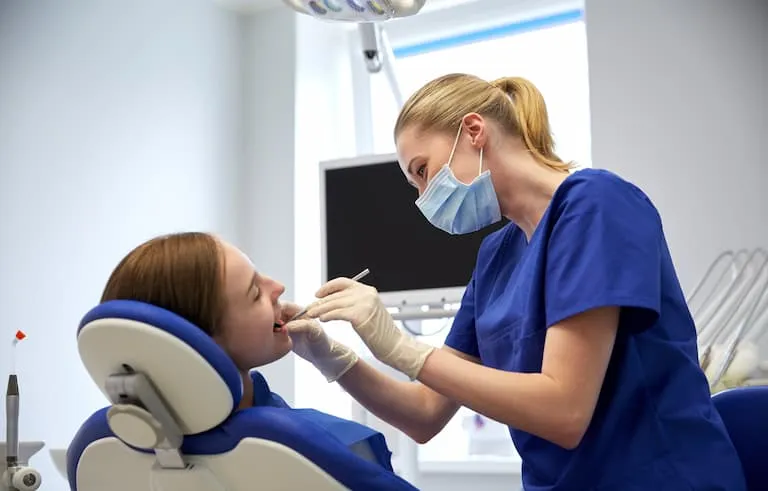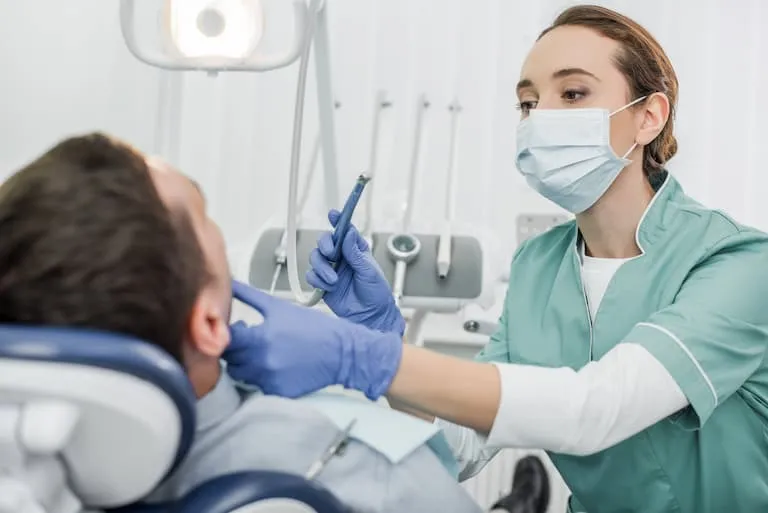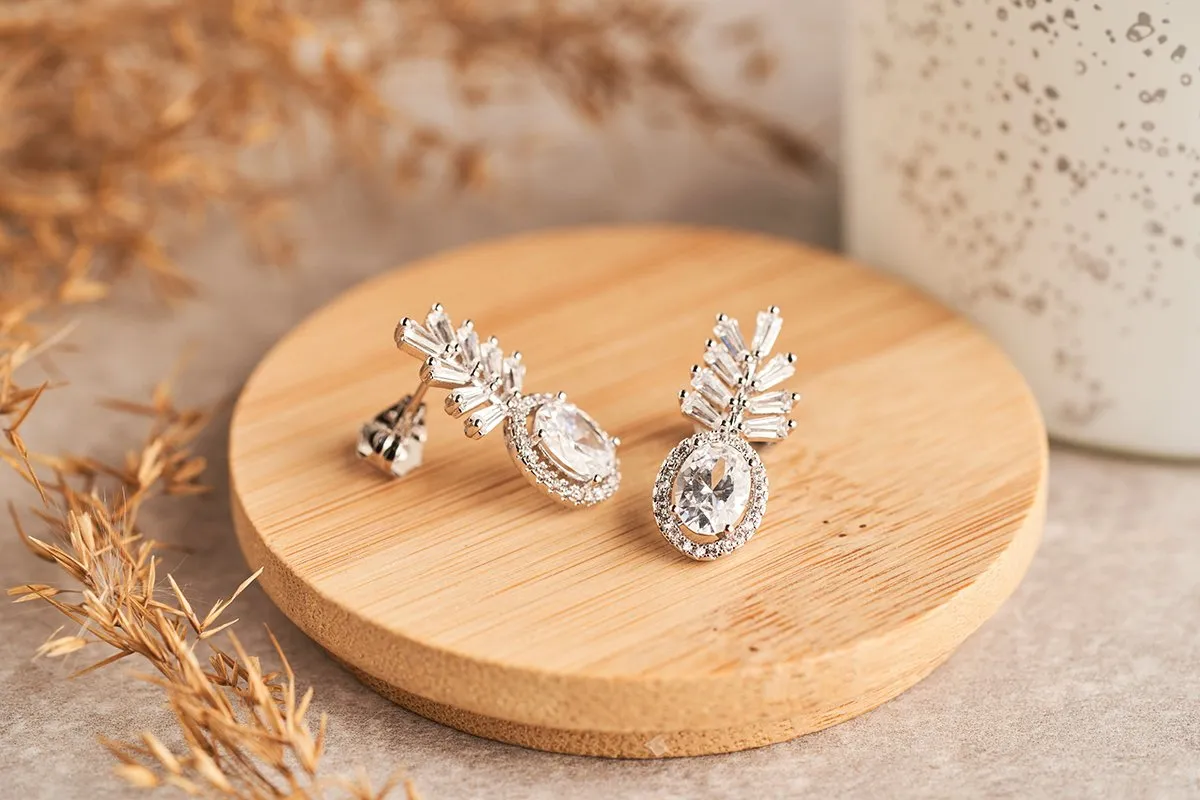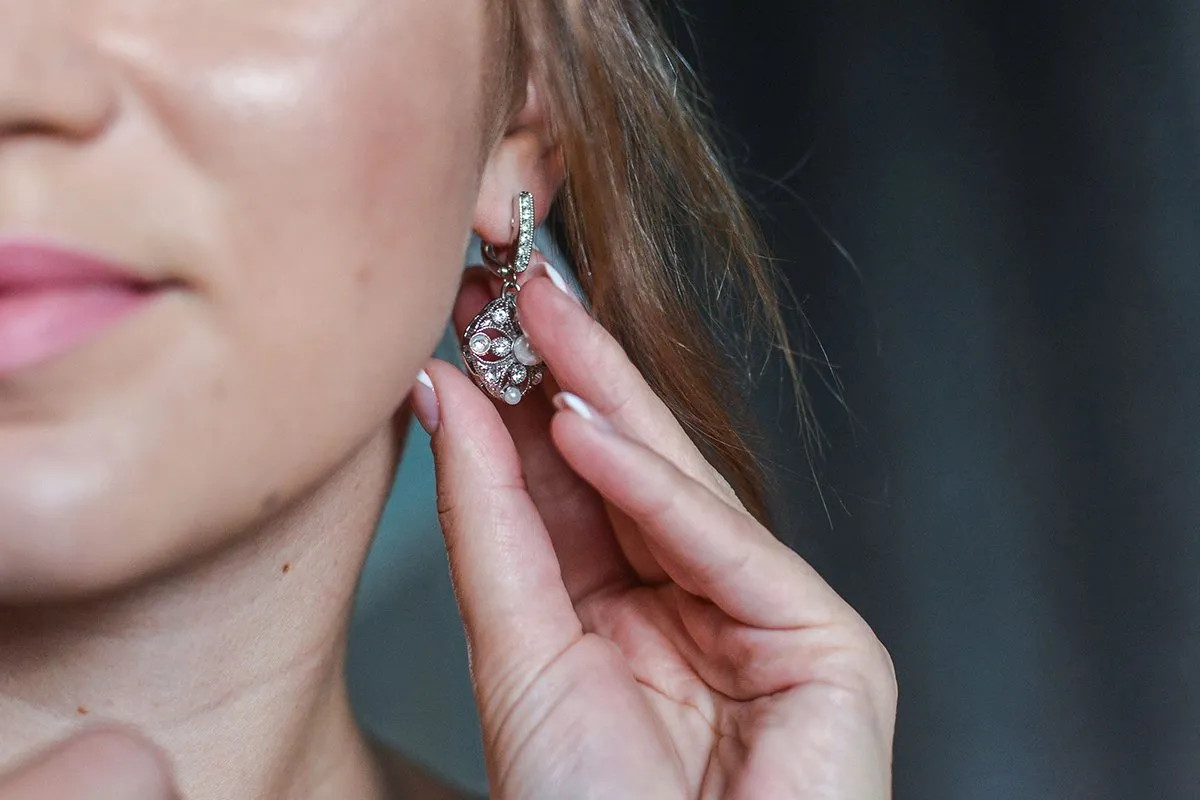Becoming a dental hygienist is a smart and reliable career move; after all, dental hygiene services are always needed, no matter where you are and what the economy is like. Furthermore, the job offers more flexibility than other positions, as hygienists only have to work a few days a week if they prefer. However, there are some requirements for how a hygienist looks and dresses.
Most dental hygienists can wear earrings under a certain size but no other piercings are permitted. However, requirements vary depending on specific dental practices and their dress codes.
The rest of this article will answer all of your questions about what jewelry and accessories a dental hygienist can wear and why. Furthermore, I’ll explain why some dental offices have strict requirements about the appearance and dress of their employees.

Piercing Guidelines for Dental Hygienists
Dental practices can make their own requirements regarding dress and appearance, so hygienists and potential hygienists will have to check with their specific companies to see their rules and requirements. However, here are some typical rules regarding piercings in dental care:
- No piercings except for ears. Earlobe piercings are very common. It would be difficult and unnecessary to ban earlobe piercings, so most dental practices don’t.
- No earrings beyond a certain size, or only stud earrings. Dental hygienists spend a lot of time close to the faces of dental patients and bent over their faces, and it would be quite distracting if they had long earrings and unhygienic if that earring were to touch the face of the patient.
- Earrings must have a back to them. Some earrings hang off the ear from just a hook, and others have a peg and a back that secures the earring to the ear. Typically, only earrings with a secure back are allowed. The more secure the earring, the better.
- Earlobe and cartilage piercings only. As piercings become more popular, some dental practices are amending their policies to fit this trend. Most offices won’t have a problem with a hygienist having multiple piercings on their ears, including the cartilage.
Most dental practices prefer that their hygienists don’t have any visible piercings in places other than the ears. This means that nose, septum, lip, eyebrow, or tongue piercings are not permitted.
If you’re looking for some nice, appropriately-sized stud earrings that would be suitable for wear at most dental hygiene offices, I recommend the BSD Treasure Cubic Stud Earrings. This set comes with five different pairs of earrings, so you’ll have a pair to suit your mood and style for each day! Additionally, these earrings are made with hypoallergenic elements that won’t irritate even the most sensitive skin.
How Do Dental Practices Develop Body Modification Policies?
Dental practices develop their body modification policies based on what is most hygienic and what most accurately projects the image they wish to have of their practice.

There is a lot to consider when developing a body modification and dress code for a workplace. Many employers want their employees to be happy and feel free to be themselves. Still, they want their business to have a certain image, especially if it is a business within healthcare that emphasizes hygiene and cleanliness.
When dental practices develop their policies, they may start with determining what they want to prioritize with their image. Is the practice professional and upscale? Or is it more laid-back and casual?
What the practice decides to emphasize may depend on its clientele. For example, if the practice services more elderly people, they may prefer their hygienists not to have any piercings beyond the earlobe.
Patients form their perceptions of a practice based on what they can see and how they are made to feel, so if someone does view piercings as unclean, they may see the practice in a negative light if their dental hygienist is sporting a lot of earrings and facial jewelry.
Many dental practices are changing their policies to be more open and flexible because of the popularity of piercings and tattoos. Many practices are getting more qualified candidates with piercings and fewer candidates without them. It is more important that a candidate is qualified and responsible than if they’re piercing-free or not.
Dress Code Recommendations for Dental Hygienists
In addition to piercings and earrings, you may have questions about other dress codes and accessory requirements for dental hygienists and what dental hygienists should wear. Here are some general recommendations:
- Wear comfortable, closed-toed shoes. Dental hygienists are on their feet for long periods of time, so you don’t want shoes that make your feet hurt! They also handle a variety of dental tools that could be dangerous if they were dropped on bare toes or feet.
- Long hair should be pulled back in a secure bun. Hygienists should definitely keep their hair out of the way. It is important to make sure hair is not in the patient’s personal space or interfering with the service.
- Keep nails trimmed and neat. Proper hygiene is essential, especially for a hygienist who puts their hands in people’s mouths all day long! Shorter, well-maintained nails are ideal.
- Uniform protocol usually includes scrubs. Scrubs are the most common clothing requirement for dental hygienists because they help patients identify who is an employee. Additionally, scrubs are comfortable and easy to move in, protecting the skin from bodily fluids.
- Avoid over-accessorizing. There’s no need to pile on the jewelry as a dental hygienist, so it’s best to avoid too many accessories that could get in the way. Loud accessories, such as bangles, could distract or annoy the patients.
- Keep as clean as possible. People expect their dental hygienists to be, well, hygienic! It’s best to keep your appearance as neat as you can.
Following these tips is a great way to ensure that you look and feel the part of a dental hygienist.

Conclusion
Piercing and jewelry policies will vary from practice to practice, so there is no hard-and-fast rule on whether or not dental hygienists can wear earrings and have other piercings.
In general, most dental practices allow earrings as long as they are secure and small in size. Some dental practices allow other piercings as well but typically prefer fewer facial piercings, as these may be seen as unprofessional or unhygienic.
What To Read Next:





